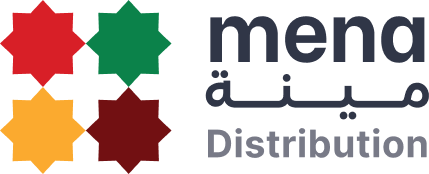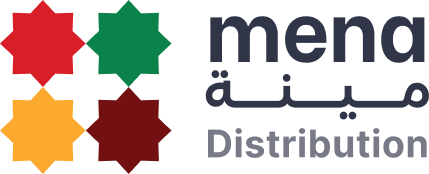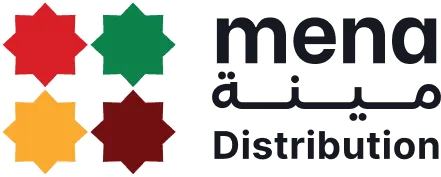Creating a Moroccan pantry opens the door to vibrant flavors and rich culinary traditions. Moroccan cuisine is known for its diverse ingredients and spices, each contributing to a unique taste experience. Building a well-stocked pantry allows you to prepare classic Moroccan dishes and experiment with modern cooking techniques.
Essential Moroccan ingredients bring warmth and depth to your meals. Items like couscous, saffron, and dates are staples that reflect the country’s agricultural heritage and cultural practices. By understanding these pantry essentials, you can bring a taste of Morocco into your kitchen.
In this guide, we will explore key Moroccan pantry staples, their uses, and how they contribute to both traditional and contemporary cooking. Whether you're an experienced chef or a beginner, these ingredients will enhance your culinary repertoire.
What Defines a Moroccan Pantry?
A Moroccan pantry is characterized by a blend of staples that reflect the country's agricultural diversity and culinary heritage. Key components include grains, spices, legumes, and dried fruits. Each item serves a unique purpose, allowing for a wide range of dishes, from hearty tagines to refreshing salads.
Common Moroccan ingredients include:
- Couscous
- Semolina
- Spices like saffron and cumin
- Dried fruits such as apricots and raisins
- Nuts like almonds and walnuts
This selection not only supports traditional recipes but also encourages creativity. With these essentials, you can craft meals that honor Moroccan culture while allowing for personal twists.
Couscous: The Everyday Moroccan Staple
Couscous is often considered the cornerstone of Moroccan cuisine. Made from steamed semolina, it is versatile and can be served with a variety of toppings. Traditionally, couscous is accompanied by stews, vegetables, and meats, making it a satisfying meal.
Cooking Couscous
To prepare couscous, follow these steps:
- Measure one cup of couscous into a bowl.
- Add one cup of boiling water or broth.
- Cover the bowl and let it sit for about 5 minutes.
- Fluff with a fork and serve.
This simple method allows you to customize your couscous. Add vegetables, chickpeas, or spices to enhance its flavor. Its quick cooking time makes it an excellent choice for busy weeknights.
Semolina: For Breads, Pancakes, and Desserts
Semolina is another essential ingredient in Moroccan kitchens. This coarse flour is derived from durum wheat and is used in various dishes, from breads to sweet treats. Its unique texture provides a delightful contrast in many recipes.
Uses of Semolina
Here are a few ways to use semolina:
- Make traditional Moroccan bread, known as khobz.
- Prepare pancakes called msemen, often served with honey.
- Create desserts like basbousa, a sweet semolina cake.
Semolina’s versatility makes it a must-have for anyone interested in Moroccan cooking. Each dish showcases its ability to absorb flavors and provide satisfying textures.
Dates: Natural Sweetness and Everyday Snacking
Dates are a beloved staple in Moroccan culture, known for their natural sweetness and chewy texture. They are often used in desserts, salads, and as snacks. Rich in nutrients, they provide energy and satisfy cravings without added sugars.
Incorporating Dates
Here are some popular ways to enjoy dates:
- Stuff them with nuts for a nutritious snack.
- Chop and add to salads for sweetness.
- Use in tagines for a sweet contrast to savory dishes.
Dates also hold cultural significance in Morocco, often consumed during Ramadan. Their rich flavor and nutritional benefits make them a staple in any pantry.
Saffron: Morocco’s Golden Spice
Saffron is one of the most prized spices in Moroccan cuisine. Its distinct flavor and vibrant color enhance many traditional dishes, especially tagines and paellas. Harvested from the saffron crocus, it is labor-intensive to produce, making it a valuable addition to your pantry.
Using Saffron
To maximize saffron's flavor:
- Soak a pinch in warm water or broth before adding it to dishes.
- Use it in rice dishes for color and taste.
- Add it to soups for a unique flavor profile.
While saffron is costly, a little goes a long way. Its unmistakable taste elevates your meals, making it worth the investment.
Sunflower Seeds and Other Snack Essentials
Sunflower seeds are a popular snack in Moroccan culture, often enjoyed roasted and salted. They provide a satisfying crunch and are a great source of healthy fats. Other snack essentials include almonds, walnuts, and dried fruits, which are commonly served alongside tea.
Snack Ideas
To create a Moroccan-inspired snack platter:
- Combine roasted sunflower seeds with dried apricots.
- Add a variety of nuts for crunch.
- Serve with mint tea for a traditional touch.
This simple yet flavorful combination reflects the Moroccan spirit of hospitality and sharing.
Balancing Savory and Sweet with Pantry Basics
Moroccan cuisine often balances savory and sweet flavors, creating complex and satisfying dishes. Ingredients like honey, cinnamon, and preserved lemons play a crucial role in this balance. Understanding how to use these pantry basics can enhance your cooking.
Flavor Combinations
Consider these combinations to achieve balance:
- Pair cinnamon with savory meats in tagines.
- Use honey to glaze roasted vegetables.
- Add preserved lemons to salads for a tangy kick.
This harmony of flavors is a hallmark of Moroccan cuisine, making each meal an experience.
How to Store Moroccan Pantry Staples for Freshness
Proper storage of Moroccan pantry staples is vital for maintaining freshness and flavor. Many ingredients are sensitive to light, heat, and moisture. Follow these tips to keep your pantry well-stocked and your ingredients in top condition.
Storage Tips
- Store spices in airtight containers away from light.
- Keep grains and flours in cool, dry places.
- Use sealed bags for dried fruits and nuts to prevent moisture.
Regularly check your pantry for expired items and replace them as needed. This ensures that your Moroccan cooking remains vibrant and flavorful.
Quick Moroccan Meals Using Pantry Ingredients
With a well-stocked Moroccan pantry, you can whip up quick and delicious meals. Many traditional dishes require minimal preparation and can be made in under 30 minutes. Here are a few ideas to inspire you.
Quick Meal Ideas
- Couscous with roasted vegetables and chickpeas.
- Semolina pancakes topped with honey and nuts.
- Tagine with chicken, dates, and almonds cooked in a single pot.
These dishes are not only quick to prepare but also packed with flavor, showcasing the essence of Moroccan cooking.
Where to Buy Authentic Moroccan Pantry Essentials Online
Finding authentic Moroccan pantry essentials is easier than ever with online shopping. Look for specialty stores that focus on Moroccan and Middle Eastern products. Always check for quality and authenticity to ensure you get the best ingredients.
Shopping Tips
When buying online:
- Read reviews to gauge product quality.
- Compare prices across different retailers.
- Consider bulk buying for items you use frequently.
With the right ingredients, you can easily recreate the flavors of Morocco in your kitchen.
Building a Moroccan pantry opens up a world of culinary possibilities. By stocking essential ingredients, you can create delicious meals that reflect the heart of Moroccan culture. Explore our selection of Moroccan pantry staples and start your culinary journey today.










